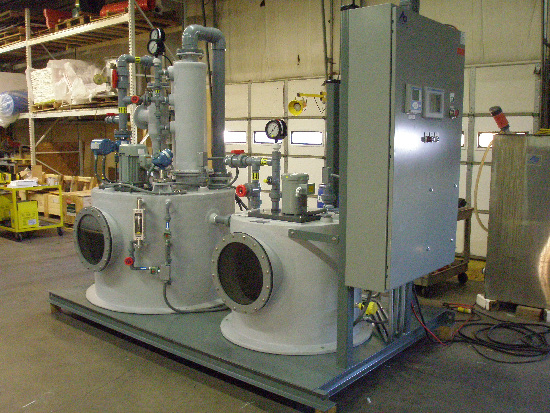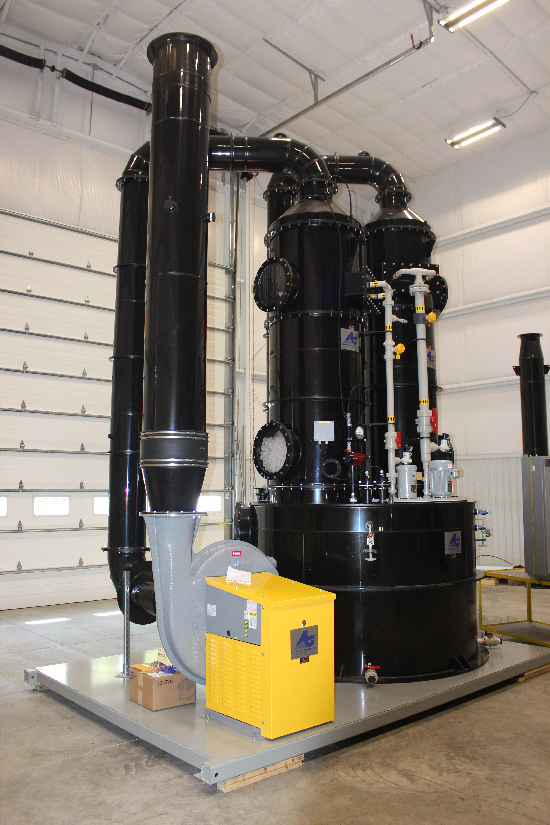In every application, AAT, Inc. considers all factors in selecting the optimum design for your hydrochloric acid scrubber. We offer complete packages, including instrumentation and controls, skid-mounting of equipment, caustic storage tank and metering pump, and installation.
Hydrogen chloride scrubbers incorporate a variety of gas-liquid contacting techniques, including packed beds, spray chambers and water jets. Depending on concentration, special mist elimination techniques are required to prevent acid “fog” from exiting the air scrubber. Hydrogen chloride (HCl) is a colorless, corrosive, pungent gas used in a variety of industries, including pharmaceutical, chemical, metal finishing, and semiconductor. It is sometimes stored and used as a gas, but typically its source is aqueous hydrochloric acid solutions. These solutions tend to have a significant HCl vapor pressure. Hydrogen chloride is not flammable but is fairly toxic. It has an Immediately Dangerous to Life and Health (IDLH) concentration of 50 ppmv with an OSHA Permissible Exposure Limit (PEL) of 5 ppmv. The odor threshold for HCl is 0.26 ppmv, giving ample olfactory warning of potential danger. Hydrogen Chloride is a Hazardous Air Pollutant (HAP), and its emissions are highly regulated. Hydrochloric acid is formed when HCl gas is dissolved in water. Plain recycled water may be used in HCl scrubbers; the wastewater stream will contain a weak hydrochloric acid solution, which may be of use to a plant. Due to the acidity of HCl, it is somewhat more effectively scrubbed using an alkaline solution. Sodium hydroxide is often used, in which case the byproduct is sodium chloride, otherwise known as table salt.






